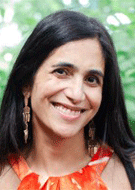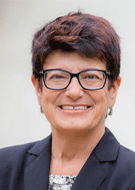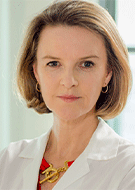As the Radiologist Shortage Continues, The Specialty Copes and Hopes for Change
Stagnant funding for residency positions and increasing numbers of imaging studies among causes



The field of radiology continues to face a significant mismatch between the supply of radiologists and the increasing demand for imaging services, creating a plethora of job opportunities for newly trained radiologists and heavy clinical workloads for existing professionals.
Key factors contributing to the gap include early retirements, the increasing number and complexity of imaging studies required by an aging and sicker population, and a lack of federally funded residency training positions.
Despite a record interest among medical students in pursuing radiology, the number of graduate medical education (GME) training positions has remained relatively flat for the past 30 years, resulting in a bottleneck in the pipeline of qualified radiologists.
“It’s really difficult to increase the number of trainees without a significant increase in federal funding,” said Amita Kamath, MD, MPH, an abdominal radiologist with expertise in body MRI at Mount Sinai and program director of the radiology residency program at Mount Sinai West, both in New York City. “We need across-the-board funding increases for all specialties facing shortages to grow and expand training programs.”
Drawing Medical Students Into Radiology
Despite initial concerns over how the emerging field of AI might deter medical students, interest in the specialty has surged.
“There was a dip in applications about a decade ago, but that’s definitely not the case now,” Dr. Kamath noted. During her seven years as program director, applications have doubled from 600 to 1,200.
“The caliber of trainees continues to exceed my expectations every year,” she said. “Our specialty continues to be very competitive. We have a new generation of applicants, many with a technological background. They’re gamers, proficient in coding, and have already done a lot of innovative research before coming to residency.”
Dr. Kamath said that the post-pandemic landscape is well suited to radiology.
“Radiology appeals to newer generations of medical students who prioritize the type of work-life balance and flexible schedules that are less available in other medical specialties,” she said.

Recruiting for Academic Positions
Current economic realities complicate the recruitment for academic radiology positions according to Carolyn Meltzer, MD, professor of radiology and dean of the Keck School of Medicine at the University of Southern California. As salaries rise, graduating residents have more options, including working fewer hours and in virtual capacity.
“It’s hard to put together competitive salary packages,” Dr. Meltzer said. “Departments are dealing with the shortages by trying to recruit their trainees, boosting salaries and relying on teleradiology.”
She said most academic institutions are experiencing shortages, which means fewer faculty members can participate in teams and engage in academic work.
“It's not good for the field,” Dr. Meltzer said. “If everyone’s working too hard clinically, there’s less time to spend on pushing the field forward.”
Finding Creative Solutions
Institutions are experimenting with various solutions to fill the gaps. Such solutions include enticing retirees to re-engage, hiring physician extenders and offering part-time positions.
Weill Cornell Medicine in New York City has embraced flexible and remote work arrangements, while Mount Sinai West offers a pathway for international medical graduates who complete fellowships to remain as faculty.
“We’ve also utilized our evening overnight group to assist with day shifts when short-staffed,” Dr. Kamath said.
With heavy workloads increasing the risk of burnout, Dr. Meltzer, also an RSNA Board member, emphasized the importance of radiologists’ well-being.
“Retention is about fulfillment,” she said. “Protecting time for professional growth and satisfaction leads to a fulfilling career. People stay where they feel valued and recognized for their contributions.”
“Retention is about fulfillment. Protecting time for professional growth and satisfaction leads to a fulfilling career. People stay where they feel valued and recognized for their contributions.”
CAROLYN MELTZER, MD
The Role of Culture in Retention
Geraldine McGinty, MD, MBA, professor of radiology and associate dean at Weill Cornell Medicine, agrees that while compensation is important, it isn’t the primary driver of retention.
“Our salaries are not the highest, but it is not about compensation, it's about culture,” she said. “We have low turnover thanks to our department leadership.”
Dr. McGinty said that the department chair meets personally with every new hire, fostering a sense of belonging.
“This approach really infuses the entire department with value and community,” she said.
When discussing the job market with residents and fellows, Dr. McGinty advises trainees to consider not only the paycheck but also how well their priorities align with the institution.
“I counsel residents not to get stuck with a restrictive covenant that limits their choices,” she said.
To achieve a better equilibrium within the workforce, Dr. Meltzer stressed the need to acquire more GME slots for radiology residents.
“This issue has persisted for 30 years; we won’t resolve it overnight,” she said. “But I hope AI tools will make radiologists’ lives easier by improving integration and prioritizing the radiologist's work at the highest level.”
Dr. Kamath also remains optimistic about the future of radiology.
“I think all of these innovative radiology tools we are developing for both research and clinical applications will ease some of the burden we are now facing with ever increasing work volumes and ultimately will allow us more time to enjoy the work we love,” Dr. Kamath said.
For More Information
Read previous RSNA News articles on recruitment and retention: